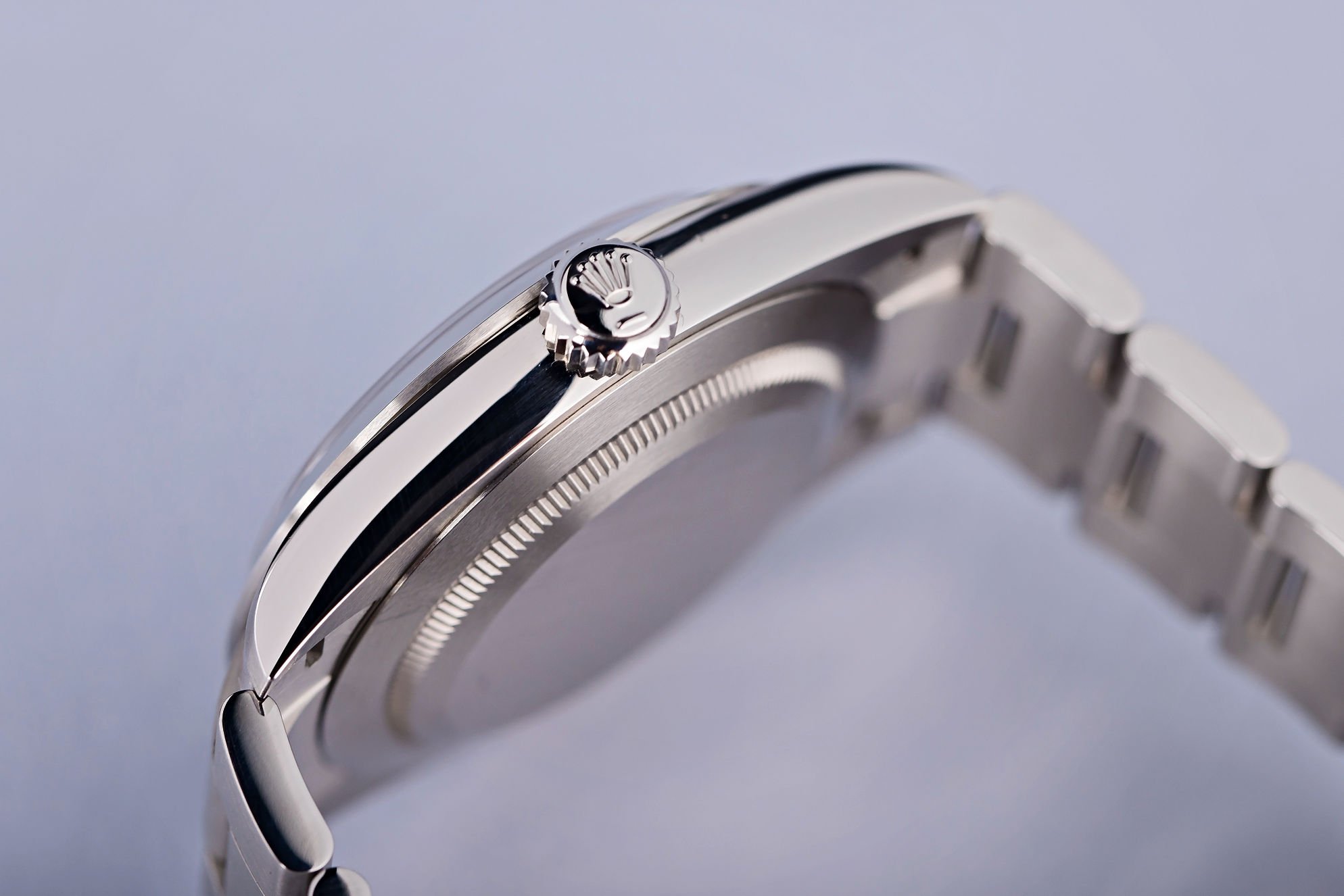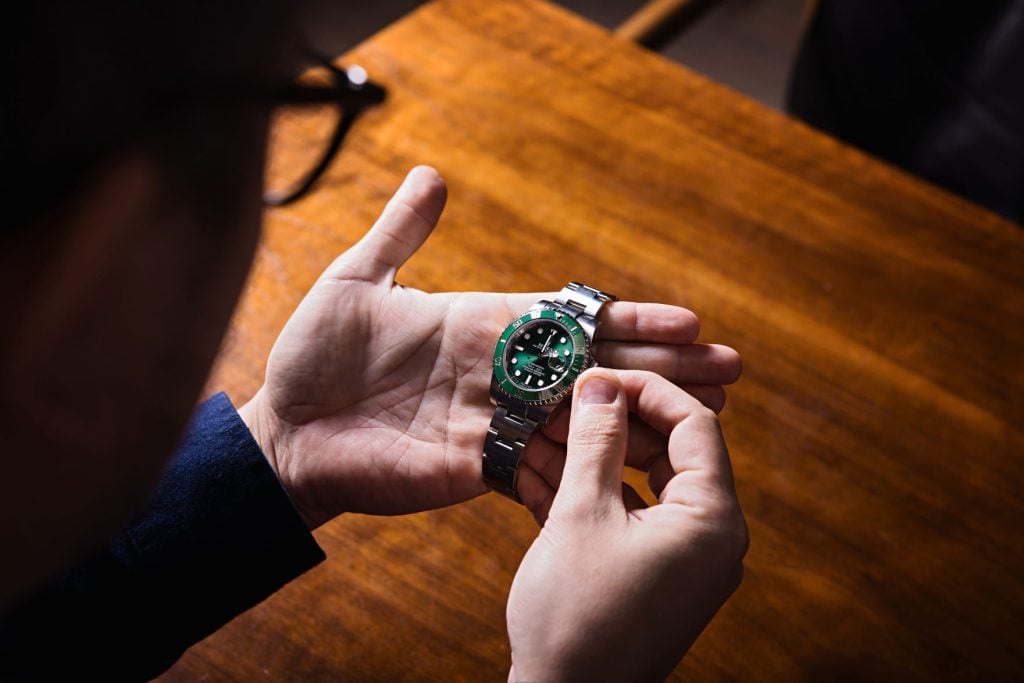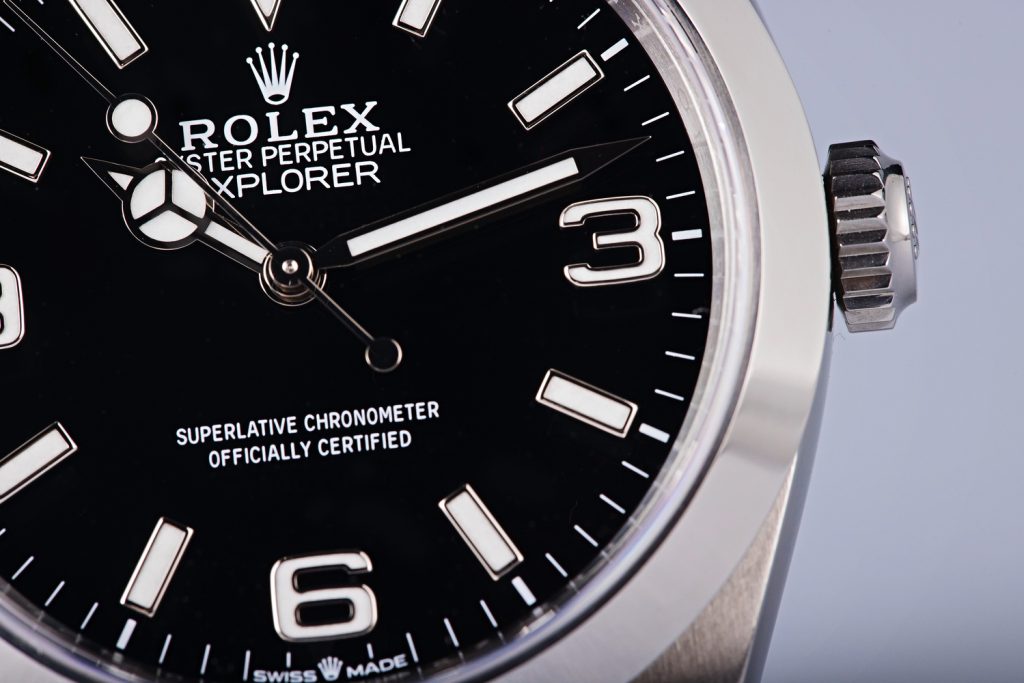Iconic Rolex watches have been adorning the wrists of discerning individuals for over a century, serving as a symbol of luxury and reliability. However, even the most meticulously crafted watches require proper care and attention to maintain their accuracy and longevity. One of the most essential aspects of owning a Rolex is ensuring that the time is set correctly, as this directly impacts the watch’s functionality and your punctuality.
Setting the time on a Rolex may seem like a straightforward task, but there are nuances and best practices that owners should be aware of to protect their investment and guarantee optimal performance. Whether you’re looking for the best first Rolex to buy or you are a seasoned collector, understanding how to set the time correctly is crucial. This knowledge not only allows you to keep your watch running accurately but also helps you avoid potential damage to the delicate internal mechanisms.
In this article, we will guide you through the process of how to set the time on your Rolex watch, taking into account the various models and their unique features. We’ll explore the different crown positions, provide step-by-step instructions, and offer valuable tips to ensure your Rolex continues to keep precise time for years to come. By the end of this guide, you’ll be equipped with the knowledge and confidence to maintain your Rolex’s accuracy and enjoy the full benefits of owning one of the best Swiss watch brands.
Understanding the Crown

Before diving into the process of how to set the time on Rolex, it’s essential to understand the role and function of the crown. The crown is the small, cylindrical component located on the side of the watch case, typically at the 3 o’clock position. It serves as the primary interface for winding, setting, and adjusting your Rolex watch.
Location and Function of the Crown on a Rolex Watch
The crown is attached to the watch case through a tube known as the crown stem. This connection allows the crown to interact with the internal movement of the watch. The crown plays a vital role in several key functions:
- Winding: In manual-wind Rolex watches, rotating the crown clockwise winds the mainspring, which powers the watch’s movement.
- Setting: Pulling the crown out to various positions allows you to set the time, date, and other functions (depending on the model).
- Sealing: When fully pushed in and screwed down (if applicable), the crown helps to seal the watch case, contributing to its water resistance.
Different Crown Positions and Their Purposes
Rolex watches typically feature crowns with multiple positions, each serving a specific purpose. The number of positions may vary depending on the model and complications. The most common crown positions are:
- Position 1 (Fully Pushed In): This is the normal running position. The crown is fully seated against the case, and the watch is sealed for water resistance.
- Position 2 (One Click Out): In this position, you can set the date (on applicable models) by rotating the crown. Some models may also allow you to adjust other functions, such as the day or GMT hand.
- Position 3 (Fully Pulled Out): This is the position for setting the time. When the crown is fully extended, you can rotate it to move the watch hands and set the desired time.
Understanding the location, function, and different positions of the crown is crucial for accurately setting the time on your Rolex watch. In the following sections, we will explore the step-by-step process for setting the time, as well as provide tips for ensuring accuracy and maintaining your watch’s performance.
Setting the Time on a Rolex Watch

Now that you have a clear understanding of the crown’s function and positions, let’s walk through the process of how to set time on Rolex watches. While the exact steps may vary slightly depending on the specific Rolex model you own, the general procedure remains the same.
Step 1: Unscrew the Crown (if applicable)
Many Rolex watches feature a screw-down crown, which provides an additional layer of water resistance. If your watch has a screw-down crown, you’ll need to unscrew it before you can set the time. To do this:
- Grasp the crown firmly between your thumb and forefinger.
- Rotate the crown counterclockwise until you feel it release from the threaded tube.
- Continue unscrewing the crown until it pops out slightly from the case.
Step 2: Pull the crown out to the appropriate position.
With the crown unscrewed (if applicable), you can now pull it out to the appropriate position for setting the time.
- Position 1: This is the normal running position. If your watch has stopped, you can wind it by rotating the crown clockwise until you feel resistance. This will power the watch’s movement.
- Position 2: If your watch has a date function, this position allows you to change the date on your Rolex watch by rotating the crown. Note that you should avoid setting the date during certain hours (typically between 9 pm and 3 am) to prevent damage to the date mechanism.
- Position 3: This is the position for setting the time. Gently pull the crown out until you feel it click into the fully extended position.
Step 3: Rotate the crown to set the time.
With the crown in position 3, you can now set the time by rotating it.
- Clockwise rotation moves the hands forward, while counterclockwise rotation moves the hands backward.
- Rotate the crown until the watch displays the correct time, using a reliable reference such as an atomic clock or official time website.
- If your watch has a second hand, you may want to wait for it to reach the 12 o’clock position before setting the minute and hour hands to ensure accuracy.
Step 4: Push the crown back in and screw it down (if applicable).
Once you’ve set the correct time, carefully push the crown back into the case until you feel it click into position 1.
- If your watch has a screw-down crown, rotate it clockwise while applying gentle pressure until you feel it engage with the threaded tube.
- Continue screwing the crown down until it is fully seated against the case. Be careful not to overtighten, as this may damage the crown or the watch’s water resistance.
How To Set Time on Rolex: Model-Specific

While the general process for setting the time on a Rolex watch remains consistent across most models, certain watches may have slight variations or additional steps due to their unique features and complications. Refer to the list below for model-specific instructions.
How to set Rolex Oyster Perpetual
By following these steps, you can accurately set the time on your Rolex watch. In the next section, we’ll discuss some additional tips to ensure your watch remains precise and reliable.
Setting the Time/Day on Vintage Rolex Watches

While modern Rolex watches feature a streamlined process for setting the day and date, vintage models may require a slightly different approach. If you own a vintage Rolex with a day-date complication, it’s essential to understand the unique characteristics of these older mechanisms to avoid potential damage and ensure accurate setting.
Understanding the Differences Between Vintage and Modern Rolex Day-Date Mechanisms
Vintage Rolex watches, particularly those produced before the 1980s, often utilize different day-date mechanisms compared to their modern counterparts. Some key differences include:
- Slower date changeover: Vintage models may take longer for the date to change completely, sometimes not finishing until several hours past midnight.
- Separate day and date settings: Some vintage watches require you to set the day and date independently, rather than having a combined quickset function.
- Fragile date mechanisms: Older day-date complications are more delicate and prone to damage if adjusted incorrectly.
Step 1: Pull the crown out to position 2.
To set the day and date on a vintage Rolex Day-Date watch, begin by gently pulling the crown out to position 2. This is the first click or stop position, typically used for setting the date on modern models.
Step 2: Rotate the crown clockwise to set the date.
With the crown in position 2, slowly rotate it clockwise to advance the date. Continue rotating until the desired date is displayed in the watch’s date window. Be patient, as the date may change more slowly than on modern watches.
Step 3: Continue rotating the crown clockwise past midnight to change the day
To set the day on a vintage Rolex, continue rotating the crown clockwise past midnight. Each complete rotation past midnight should advance the day by one increment. Keep rotating until the correct day is displayed in the watch’s day window.
Step 4: Repeat Steps 2 and 3 Until the Correct Day and Date Are Displayed
If necessary, repeat the process of rotating the crown clockwise to set the date and day until both display the correct information. Take your time and be gentle to avoid putting excessive strain on the delicate day-date mechanism.
Step 5: Push the Crown Back in and Screw It Down (if applicable)
Once you’ve set the correct day and date, carefully push the crown back into position 1 until you feel it click into place. If your vintage Rolex has a screw-down crown, rotate it clockwise while applying gentle pressure until it is fully seated against the case.
Remember that vintage Rolex watches require extra care and attention when setting the day and date. If you’re unsure about the process or encounter resistance, it’s best to consult with a professional Rolex watchmaker to avoid causing unintended damage to your treasured timepiece.
Tips for Accurate Time Setting

While setting the time on your Rolex may seem straightforward, there are several tips and best practices to keep in mind to ensure accuracy and protect your watch’s intricate mechanisms. By following these guidelines, you can maintain your Rolex’s precision and reliability for years to come.
Synchronizing with a Reliable Time Source
To ensure your Rolex is displaying the most accurate time possible, it’s crucial to synchronize it with a reliable time reference. Some options include:
- Atomic clocks: These highly precise clocks are available online and can provide an exact reference time.
- GPS time signals: Many smartphones and smartwatches receive GPS time signals, which can serve as an accurate reference.
- Official time websites: Websites like time.gov or worldtimeserver.com offer precise time information based on your location.
When setting your Rolex, aim to synchronize it as closely as possible with your chosen reference time for optimal accuracy.
Avoiding Setting the Date During Certain Hours
Rolex watches with date complications feature a delicate mechanism that advances the date display. To prevent potential damage to this mechanism, it’s best to avoid setting the date during certain hours, typically between 9 pm and 3 am. During this period, the date gears are already engaged in preparation for the automatic date change at midnight, and manually adjusting the date can cause undue stress or even breakage.
If you need to set the date and the current time falls within this cautionary window, simply advance the time past 3 am before setting the date. Once the date is set, you can then adjust the time back to the correct hour.
Importance of Fully Screwing Down the Crown
For Rolex watches with screw-down crowns, it’s essential to fully screw the crown back into position after setting the time or making any adjustments. The screw-down crown plays a vital role in maintaining the Rolex watch water resistance by creating a tight seal against the case.
When screwing the crown back in, apply gentle pressure while turning it clockwise until you feel it engage with the threaded tube. Continue screwing it down until it is fully seated against the case. Avoid overtightening, as this can damage the crown or the watch’s water resistance seals.
By keeping these tips in mind and following the proper procedures for setting the time, you can ensure your Rolex remains accurate, reliable, and protected against potential damage. In the next section, we’ll address some common challenges Rolex owners may face and how to handle them.
Addressing Common Challenges

Even with the best care and attention, Rolex owners may occasionally encounter challenges when setting the time or maintaining their watches. In this section, we’ll explore some common issues and provide guidance on how to address them effectively.
Dealing with a Stiff or Hard-to-Turn Crown
Over time, the crown on your Rolex may become stiff or difficult to turn. This can be due to a buildup of dirt, debris, or dried lubricant within the crown tube. If you encounter resistance when attempting to set the time or make adjustments, consider the following:
- Clean the crown: Gently brush the base of the crown with a soft-bristled toothbrush and warm, soapy water. This can help remove any dirt or debris that may hinder its movement.
- Apply gentle, steady pressure: When turning the crown, apply consistent, gentle pressure to avoid putting excessive strain on the delicate internal mechanisms.
- Seek professional assistance: If the crown remains stiff or you’re uncomfortable attempting to address the issue yourself, it’s best to consult with a qualified Rolex watchmaker. They can properly diagnose the problem and take the necessary steps to restore the crown’s smooth operation.
Adjusting the Time When Traveling Across Time Zones
If you frequently travel across time zones, you may need to adjust your Rolex’s time to match your current location. To do this:
- Pull the crown out to position 3 (fully extended) to stop the second hand.
- Rotate the crown in the appropriate direction to move the hour hand forward or backward to the new time zone. Be mindful of AM/PM indicators if your watch features a 12-hour display.
- Once the correct time is set, push the crown back in and screw it down (if applicable) to resume normal timekeeping.
If you own a Rolex GMT-Master or GMT-Master II or a Rolex with a dual-time zone complication, consult your watch’s user manual for specific instructions on adjusting the secondary time zone hand.
Handling a Watch That Has Stopped Running
If your Rolex has stopped running, it may simply need to be wound. For manual-wind models, rotate the crown clockwise approximately 20-30 times to fully wind the mainspring. For automatic models, gently shake the watch side-to-side for 20-30 seconds to activate the rotor and begin the winding process. If the watch still does not start, consider the following:
- Check the power reserve: Some Rolex models feature a power reserve indicator. If the reserve is low, continue winding the watch until it reaches full capacity.
- Let the watch sit: If you haven’t worn your automatic Rolex for an extended period, it may take some time for the lubricants to redistribute. Let the watch sit dial-up for a few hours to allow the movement to regain its optimal performance.
- Consult a professional: If the watch continues to stop despite winding and reasonable waiting periods, it may require professional servicing. A qualified Rolex watchmaker can assess the movement and make any necessary repairs or adjustments.
By understanding how to address these common challenges, you can keep your Rolex running smoothly and accurately, even in the face of potential obstacles.
Maintenance and Care

Proper maintenance and taking care of your Rolex are essential to ensure your watch performs optimally and maintains its value. Service your Rolex every 5-7 years, depending on the model and usage, to keep the movement clean, lubricated, and in good repair. The cost of servicing a Rolex can vary depending on the model, age, and condition of the watch, as well as the type of service required. On average, a basic service for a modern Rolex can range from $800 to $1,000, while more extensive repairs or services for vintage models may cost upwards of $1,500 or more. It’s essential to have your Rolex serviced by a qualified and experienced watchmaker to ensure the best possible care for your timepiece.
When not in use, store your watch in a watch box or soft pouch, away from moisture and extreme temperatures. Wind manual and automatic watches periodically to keep the movement lubricated. Protect your Rolex from extreme temperatures, shocks, and magnetic fields to maintain its accuracy and avoid damage to the delicate internal components. By following these guidelines, you can extend your Rolex’s lifespan and preserve its performance and value.
How To Set Time on Rolex: Conclusion
In this comprehensive guide, we have explored the intricacies of how to set time on Rolex watches. By understanding the functions of the crown, following the step-by-step instructions, and adhering to the tips and best practices outlined, you can ensure that your Rolex remains accurate and reliable.
Whether you own a modern or vintage Rolex, it’s essential to familiarize yourself with your specific model’s features and complications. By taking the time to learn about your watch’s unique characteristics, you can confidently navigate the process of setting the time and making any necessary adjustments.
Remember, by properly caring for and maintaining your watch, you can ensure that it continues to perform at its best and retains its value for generations to come. Regular servicing, proper storage, and protection from harmful conditions are all crucial aspects of responsible Rolex ownership.
As you enjoy your Rolex and the timeless elegance it brings to your wrist, take pride in knowing that you have the knowledge and skills to keep it running smoothly. With the information provided in this guide, you are well-equipped to be a responsible and informed Rolex owner, ensuring that your timepiece remains a cherished companion for years to come.









